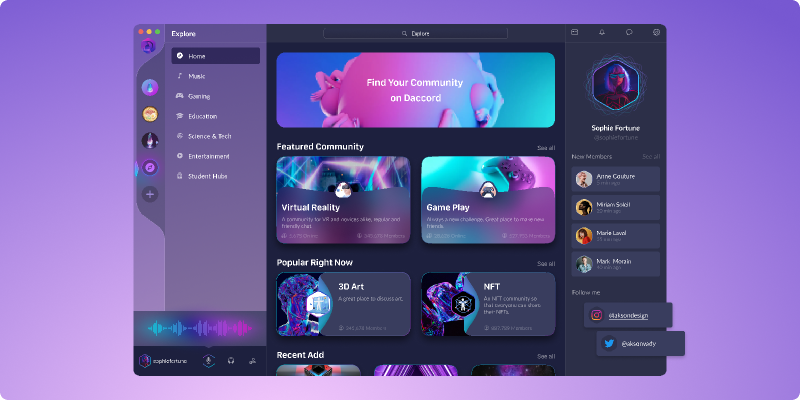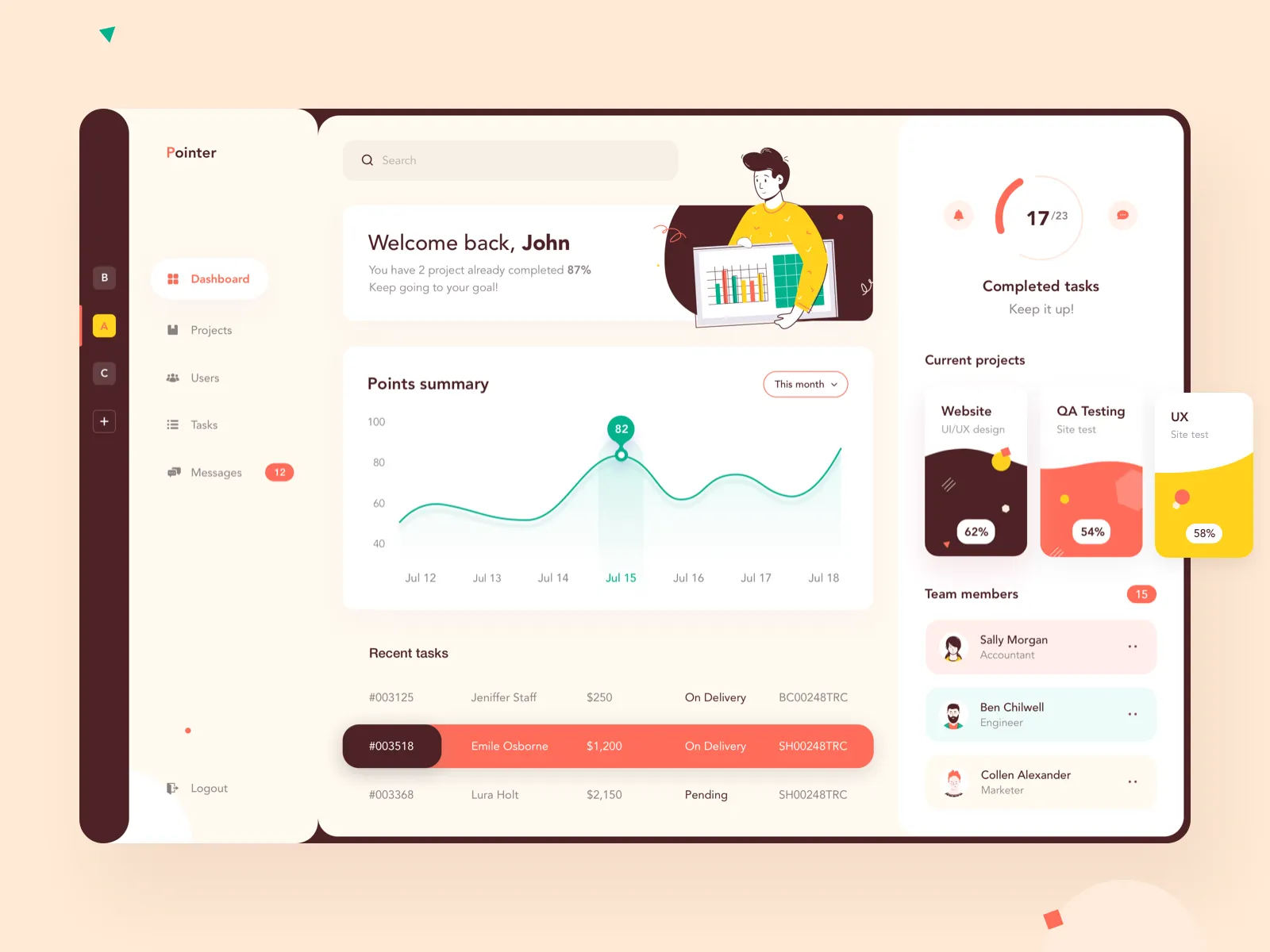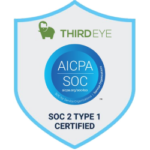Custom Web UI Applications: Designing Digital Experiences That Define Brands
Introduction: From Templates to Tailored Experiences
Picture this — you visit two different websites selling similar products. One looks generic, using the same off-the-shelf template you’ve seen a hundred times before. The other?
It welcomes you with a smooth animation, interactive dashboards, and a layout that feels intuitively yours.
Guess which one earns your trust, your clicks, and your business?
That’s the power of Custom Web UI Applications — digital experiences that go beyond aesthetics to deliver purposeful interaction, accessibility, and identity.
While template-based sites are easy to launch, custom UI applications are designed for growth, scalability, and user delight — becoming a key differentiator for startups and enterprises alike.
In this article, we’ll explore what makes custom web UI applications essential in today’s fast-paced digital world, the problems they solve, how they’re built, and why businesses that invest in them stay ahead of the curve.

Overview: What Is a Custom Web UI Application?
A Custom Web UI Application (User Interface Application) is a web-based interactive platform designed and developed from scratch (or semi-customized) to meet specific business needs, user flows, and brand objectives.
It’s not just about how it looks — it’s about how it works, feels, and scales.
Instead of relying on pre-made themes or drag-and-drop builders, custom web UIs are handcrafted using front-end technologies like:
- js, Angular, or Vue.js for component-driven UI
- TailwindCSS, Bootstrap, or custom SCSS for responsive styling
- js, Django, or Flask for backend logic
- APIs and databases for data-driven interactivity
Custom UIs are designed around user experience (UX) — ensuring the interface not only looks beautiful but behaves predictably and efficiently for every user segment.
Why Businesses Are Moving Towards Custom Web UIs
In an era where user expectations evolve faster than frameworks, customization is no longer a luxury — it’s a necessity.
Off-the-shelf solutions often:
- Limit functionality
- Restrict brand expression
- Struggle with performance at scale
- Offer poor integration flexibility
A custom UI, on the other hand, empowers teams to create unique digital ecosystems that align perfectly with internal tools, workflows, and customer journeys.
It’s like tailoring a suit — the same fabric, but when made to fit your body perfectly, the confidence it gives is unmatched.
Use Cases / Problem Statements Solved with Custom Web UI Applications
Let’s explore where and why businesses invest in custom web UI applications.
1. Enterprise Dashboards and Data Visualization Tools
Organizations today are drowning in data — from sales metrics to IoT sensors to customer analytics.
Custom web UIs allow companies to create interactive dashboards that visualize complex datasets in real-time.
Example:
A logistics company can monitor live shipments, warehouse inventories, and delivery KPIs — all in one central dashboard with custom alerts, charts, and predictive analytics.
2. SaaS Platforms and Web Portals
Most Software-as-a-Service (SaaS) products depend on intuitive and consistent UIs to attract and retain users.
With a custom web UI, you can:
- Craft personalized onboarding flows
- Integrate payment gateways seamlessly
- Build scalable multi-tenant structures
- Offer dynamic theming for different user roles
Think of Slack, Notion, or Figma — every click and animation is engineered to create emotional connection through design.
3. E-Commerce Platforms with Unique Experiences
E-commerce brands often outgrow template-based solutions like Shopify or WooCommerce.
A custom UI application allows:
- Dynamic product recommendation engines
- 3D product visualizations
- Smart filters and custom checkout flows
- Personalized offers for each returning customer
Result: Higher conversions, better brand retention, and smoother scalability.
4. Internal Tools and Admin Panels
Companies increasingly need internal web tools that align with specific operations — HR management, ticketing systems, CRM dashboards, or project trackers.
Instead of adapting to rigid SaaS interfaces, businesses can design around their workflow, ensuring efficiency and user comfort.
5. Interactive AI / ML Interfaces
AI-driven applications like chatbots, recommendation engines, or data annotation platforms depend on user-friendly UIs to manage complexity.
Custom web UIs help visualize ML outputs (graphs, clusters, predictions) in a clear, intuitive way — bridging the gap between machine intelligence and human decision-making.
6. Government, Education, and Healthcare Applications
Sensitive sectors like public administration, education, or healthcare require:
- Accessibility compliance (WCAG standards)
- Secure authentication (OAuth, Role-based IAM)
- Seamless integration with databases and APIs
Custom UIs ensure these systems are inclusive, reliable, and compliant with regional regulations.
Pros of Building a Custom Web UI Application
- Complete Creative Freedom
No template constraints — every pixel, interaction, and component can be tailored to match the brand’s voice and functionality. - Scalability & Future-Proofing
As your app grows, new modules or APIs can be added without redesigning the entire system. - Enhanced Performance
Lightweight, optimized code reduces load times and improves SEO ranking. - Stronger Brand Identity
Consistency in design and UX reinforces brand recognition and trust. - Integration Flexibility
Custom apps can easily integrate with CRMs, analytics tools, payment APIs, or third-party platforms. - Accessibility & Inclusivity
Custom UIs can be designed for accessibility from day one, ensuring usability for all audiences. - Data Ownership & Security
Unlike hosted template solutions, custom applications give full control over codebase and data storage.
Cons of Building a Custom Web UI Application
- Higher Initial Investment
Custom development requires more time, expertise, and resources upfront. - Longer Development Cycles
Building from scratch involves planning, prototyping, testing, and iteration. - Maintenance Responsibility
The development team must manage updates, bug fixes, and server upkeep. - Skilled Talent Requirement
You need experienced developers, designers, and UX strategists to ensure quality delivery. - Risk of Overengineering
Without clear objectives, teams might build overly complex features that don’t align with user needs.
Alternatives to Custom Web UI Applications
- Template-Based Builders (e.g., Wix, Squarespace, Webflow): Quick and affordable for MVPs but limited in flexibility.
- Headless CMS Platforms (e.g., Strapi, Contentful): Combine customizable frontends with structured backends.
- Low-Code / No-Code Platforms (e.g., Bubble, Retool): Enable rapid prototyping without deep coding but may lack long-term scalability.
- Progressive Web Apps (PWAs): Offer app-like experiences in browsers without the cost of native apps.
Each approach depends on your project’s timeline, budget, and scale.
Upcoming Updates / Industry Insights
- AI-Driven Design Systems: Tools like Uizard and Galileo are using AI to auto-generate wireframes and UI components.
- Voice-Enabled Interfaces: Integrating conversational AI into web apps is becoming mainstream.
- Micro Frontends: Breaking large UIs into independent modules managed by different teams improves scalability.
- WebAssembly (WASM): Boosts web performance, enabling near-native execution speeds.
- Next-Gen Frameworks: Emerging tools like Qwik and Svelte are redefining rendering efficiency.
Custom web UIs are no longer static — they’re dynamic, intelligent, and context-aware, learning from user behavior to improve continuously.
Project References
Frequently Asked Questions on Custom Web UI Application
- Why invest in a custom web UI when templates exist?
Templates serve generic needs; custom UIs serve your unique business logic, brand, and scalability goals. - What technologies are used for custom UI development?
React, Angular, Vue, Django, Flask, Node.js, Tailwind, GraphQL, and REST APIs are the most common choices. - How long does it take to build a custom web UI?
Depending on complexity, typically 8–20 weeks, including design, development, and testing. - Can it be integrated with AI or existing systems?
Absolutely. Modern custom UIs easily integrate with AI APIs, data pipelines, and microservices. - How do custom UIs help SEO?
Clean code, faster loading, structured metadata, and optimized user flows improve rankings and engagement.
Third Eye Data’s Take on Custom Web UI Application
We build custom web UI applicationsto allow users to interact with AI models: dashboards, chat UIs, monitoring tools. These are vital for enterprise adoption, because models alone aren’t useful without interfaces.
- We believe UI/UX is as important as the model: clients need understandable dashboards, visualizations, user input forms.
- We often build full stack UI (frontend + backend) so clients don’t just get models but solutions they can use immediately.
In today’s digital-first era, your website or web app is the front door to your business.
Every scroll, hover, or click communicates something about your brand’s values and vision.
Custom Web UI Applicationsare not just about design — they are about experience engineering.
They merge technology, creativity, and strategyto deliver digital products that connect, convert, and endure.
If your goal is to create a web application that’s not just functional, but unforgettable — custom UI is the way forward.
Call to Action: Let’s Build What Your Users Deserve
Your business deserves more than just a template.
It deserves a digital experience built to inspire trust, engagement, and growth.
Let’s create your next-generation Custom Web UI Application — designed for performance, built for people, and scaled for the future.
Contact Us or Schedule a Consultation.







